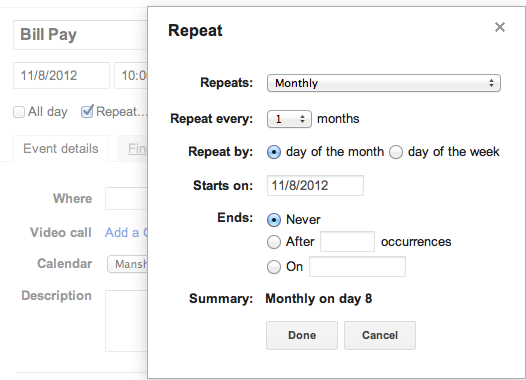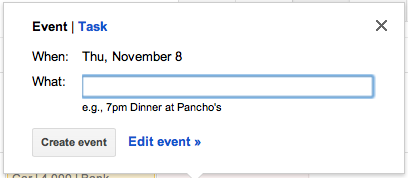This post is written by Shiv Kukreja, who is a Certified Financial Planner and runs a financial planning firm, Ojas Capital in Delhi/NCR. He can be reached at skukreja@investitude.co.in
Certain things look a little complicated till they are done for the first time. Investing in stocks of foreign companies, like Apple, Google or Facebook, is one of those. It seems very complicated but it is not so.
A few days back Manshu had written a post on how NRIs can invest in the Indian stock market. CA Karan Batra wanted to have a similar post on how Indians can invest in shares listed on NYSE.
Here is what he had to say:
Hi Manshu
Very informative post on how NRI’s can invest in India.
I would highly appreciate if you could author another post on How Indian’s can invest in Shares listed on the New York Stock Exchange. I heard that its possible for Indians to invest in Shares listed on NYSE but not sure about how to invest..
These days, every other financial advisor advises his/her clients to diversify across asset classes and across markets. Some investors in an attempt to diversify their portfolios do not mind to experiment and desire to have information regarding the procedure.
So, here is my attempt to share the required information with our readers.
Open a trading account
Like you open a trading account here in India with a broking company to invest in shares listed on NSE or BSE or any other stock exchange, you are required to follow a similar process to open a trading account with an Indian broking house to invest in shares of some foreign companies listed on the stock exchanges of their respective countries.
How do I open a trading account to invest in International Capital Markets?
To facilitate you to do the same, an Indian stock broker enters into a tie-up with a foreign broking partner who has the license to act as an intermediary and execute the trades on your behalf in the foreign markets.
The Indian stock broker will act as an introducing intermediary between you and the foreign broking house. The Indian stock broker will also help you in getting your account opened and completing the formalities of Know Your Customer (KYC) applicable for that country.
You just need to fill an application form and provide your identity proof such as passport or PAN card and residential address proof such as Voters ID card or latest bank statement as the documents required to open an account.
Once your necessary details are registered, you will be provided the bank account details of the foreign broker to which funds are to be transferred. You will also get the contact details of the account executive who will take care of your account in case you require any kind of assistance.
Funds Transfer – Pay-In/Pay-Out Process
As per the remittance norms of the Reserve Bank of India (RBI), an Indian citizen can remit a maximum of USD 2,00,000 in a financial year, from any of the authorised banks in India, including for investments in international capital markets.
To remit funds to the foreign broker’s bank account, you will be required to visit your bank branch, duly fill Form A2 and submit it there along with your PAN card copy.
The foreign brokers accept funds originating from your bank account only and will reject any third party fund transfer. Also, they do not accept bankers drafts, cheques or cash deposits either.
To get your money back, you need to fill “Bank Transfer Request†(BTR) form online and send it to the foreign broker. Once the payout request is acknowledged, the amount will be credited to your bank account.
It takes around 24 to 48 hours to remit money from your bank account to your trading account with the foreign broker and around 48 to 72 hours from your trading account to your bank account.
You may remit funds in one of the many global currencies from your bank account to your trading account but you need to decide the base currency in which you want to settle your transactions. So, if you set USD as the base currency in your account, then all stock exchanges which accept payments in USD will settle your transactions in USD automatically.
For your trades on other exchanges, which do not accept payments in USD, the foreign broker will convert your base currency, USD in this case, to the currency of that exchange at the market rate to execute the transaction.
Once your account is opened and funds are transferred, you will be provided a client Login ID and password to have an immediate access to the foreign broker’s trading platform to buy and sell shares of the listed foreign companies. All dealings like trading, delivery of shares/funds etc. will be done directly with the foreign broker without any involvement of the Indian stock broker.
Demat Account
Unlike here in the domestic markets, where your bought shares get transferred into your demat account in T+2 days, when you buy shares in the foreign markets the shares remain in a pool account with the broker’s custodian but start reflecting in your trading account immediately after buying.
Unlike with most Indian brokers, margin trading and short selling will not be allowed with a foreign broker. You will be able to buy shares only when there is sufficient cash in your account and sell shares only when you already hold them.
You can have the access to all your transactions, account history and ledger balance on the trading platform. You will also get the contract notes for your executed trades in your mailbox.
Which brokers are providing this facility here in India?
Only a few Indian broking companies like Kotak Securities, ICICI Direct, India Infoline, Reliance Money and Religare, are offering these trading services to Indian investors.
In 2007, ICICI Securities became the first company to have a tie-up with US-based broking firm, Penson Financial Services, for its overseas trading platform with access to NYSE Euronext and Nasdaq.
While Kotak Securities has a strategic agreement with Singapore’s Saxo Capital Markets, the capital markets arm of Denmark-based Saxo Bank, India Infoline has such relationship with US-based Interactive Brokers, LLC. Reliance Money also has such an arrangement with US-based optionsXpress.
Kotak Securities provides access to 24 international stock exchanges through its trading platform “Kotak Traderâ€. These exchanges cover all the big markets and almost all the big stock exchanges including New York Stock Exchange (NYSE), Nasdaq, London Stock Exchange (LSE), Australian Stock Exchange (ASX), Hong Kong Stock Exchange (HKEX) and Singapore Exchange (SGX) among others. Here is the link to check the markets you can trade in with Kotak Trader.
You can transact on over 80 international stock exchanges with India Infoline whereas, ICICI Securities and Reliance Money facilitate you to transact only in the US markets.
Kotak Trader offers trading in equity markets, ETFs, ADRs, GDRs and REITs through 100% cash and carry system. But, this service is available only for individuals. Partnership firms, HUFs, trusts, NRIs, corporates etc. are not allowed to open an account with Kotak Securities for their overseas investments.
Different companies require different minimum amount to open a trading account. Kotak Securities require you to make an initial deposit of USD 10,000 or INR 5,00,000, whichever is higher, within a period of 3 months from the date of account opening. With India Infoline also, this amount is USD 10,000 but ICICI Direct and Reliance Money allow you to trade with a minimum initial deposit of USD 1,000.
Kotak Securities charges Rs. 750 to open such an account and 0.75% of the trade value as the brokerage, while ICICI has an account opening fee of Rs. 999 and the transaction charges of USD 9 or 0.75% of the trade value, whichever is higher. India Infoline does not have any account opening charges.
As your overseas investments will be made in some foreign currency, your investment gain or loss will also be linked to the movement of that currency. So, if you invest in some stocks in USD and USD appreciates in value, then it would add to your gains or lower your losses. e.g. Suppose you paid Rs. 50 per USD at the time of investment and liquidate your investment when the USD appreciates to Rs. 55, you will get back Rs. 55 per USD.
The process of transacting in equity markets overseas is not that complicated, but you need to understand the dynamics of global equities. You can understand the revenue sources for Bharti Airtel in India but it is difficult to do so for SingTel in Singapore.
There are some other ways also in which you can invest in overseas markets; I will do another post to cover those options.





